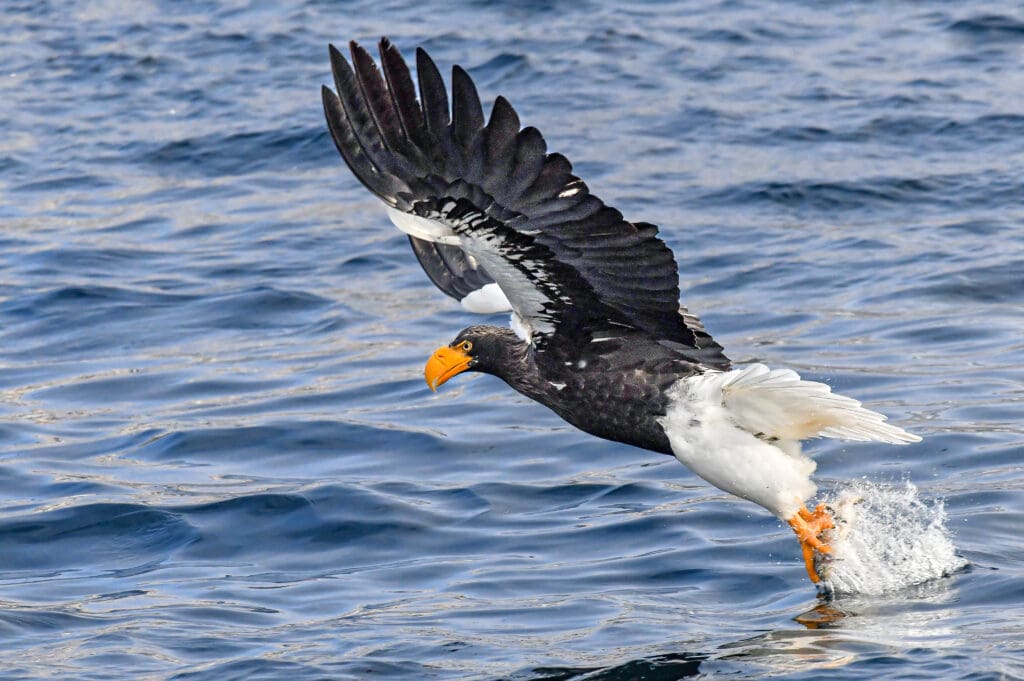Quite a lot of birdwatching news revolves around rare sightings. While some birders are content to enjoy their local wildlife, others long to fill their “life lists” with as many species as possible, often from far afield. While travel is the only reliable way to spot some birds in the wild, one of the most fascinating phenomena for birders is vagrancy. Each migration season, I write extensively on vagrant bird sightings. From the famous Steller’s Sea Eagle that began its journey through the United States in 2020, to the relatively routine, though still rare and exciting, occurrence of vagrant birds all over the globe, vagrancy is the bread and butter of birdwatching news.
Related Article: Bird Flu Causes Changes in Gannet Eye Color
But what is vagrancy and why does it happen? The first answer is simple and the second is much more complex. Vagrancy refers to when birds are found outside of their natural range. When this occurs in big groups, usually due to some kind of fluctuation in population or food availability, this is called an irruption.
For single birds, vagrancy can mean anything from a migratory bird wandering outside of its native range to a lost traveler finding its way to the other side of the globe. Most vagrancy occurs in migratory birds during migration seasons. This is intuitive. Birds are much more likely to get lost when traveling over long distances. Although we understand that migration has a major role in vagrancy, the exact cause of vagrancy is still largely unknown.
A recent study by ornithologists from the University of California, Los Angeles has found a potential cause that may contribute to vagrancy. The navigational systems of birds have long been a mystery. How is it that a homing pigeon can find its way back to a loft halfway across the world, even if it hasn’t ever made the journey before? Ornithologists have long suspected that some kind of electromagnetic sense plays a role in avian navigation.
Now, this 2023 study has indicated a correlation between instances of vagrancy and disturbances in earth’s electromagnetic fields. The study examined instances of vagrancy over several decades alongside data recording geomagnetic disturbances and solar storms. What they found was a connection between geomagnetic disturbances and an increased probability of vagrancy. One puzzling data point did suggest that solar activity might lead to a decreased risk of vagrancy. The complexities of these relationships are not yet understood.
Through analyzing vagrancy and geomagnetic data, the ornithologists were able to estimate that as many as 30% of vagrant birds might be caused by geomagnetic disturbances. This is both an interesting piece of information with regards to vagrancy and a fascinating insight into the navigational processes of birds.
Popular Article: Understanding the Conflict Between Bird Conservation and Renewable Energy

